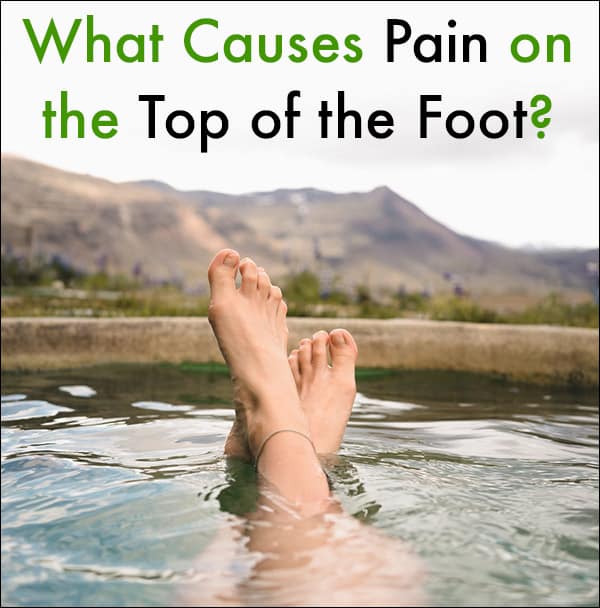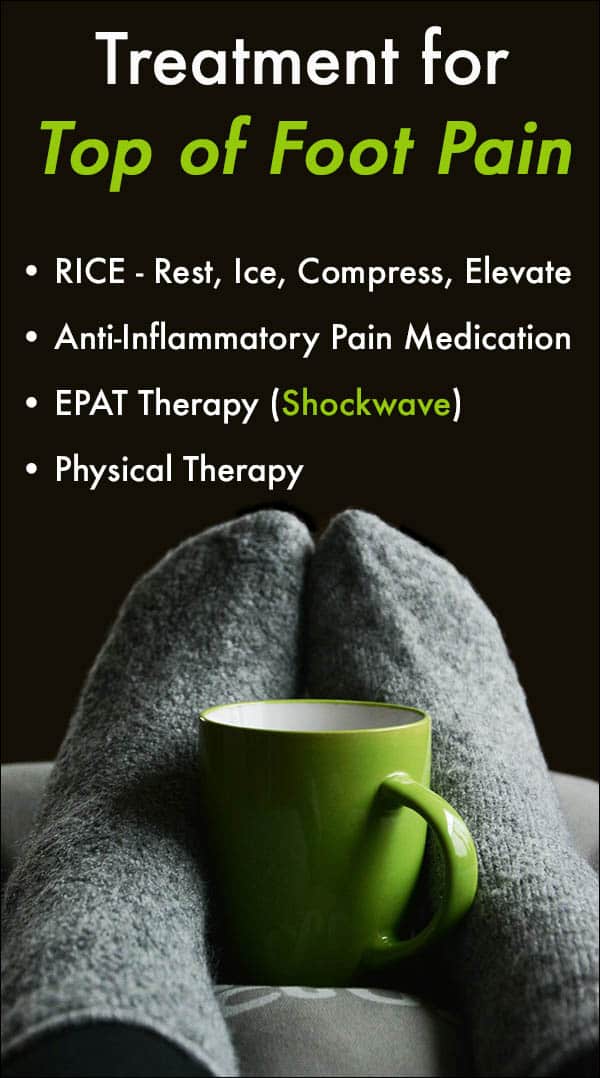It might sound ridiculous to say, but it’s certainly true: our feet carry us wherever we go. Depending on our age, our feet have walked or run hundreds and hundreds, if not thousands of miles over the years. Rarely do we think about the complex structure of bones, tendons and muscles until there’s an injury or we experience intermittent sharp pain on top of the foot.
There are few things as uncomfortable and debilitating as foot pain. For athletes, it may mean poor game-time performance or an inability to keep up with their training regimen while they wait for the issue to heal.
However, healthy feet are just as important for everyone else too. A lack of pain-free mobility can cause serious quality of life issues and even disability if a person’s job requires them to be on their feet all the time.
Obviously, top foot pain can be the result of an injury, such as a sprain or strain, or even dropping a heavy object on the foot by accident. But it can also arise when there’s seemingly been no injury at all.
Understanding what some of these conditions are can be a useful foot pain identifier.
What Conditions Can Cause Top of Foot Pain?
It’s important to note that some health issues, such as diabetes or Gout, can cause pain in the feet. These are special types of health conditions, so it’s important to always consult with your doctor about overall health and wellbeing when you experience pain in the feet.
Some types of stress fractures of the bones in the feet can cause painful symptoms and these should be examined by a podiatrist to perform an assessment and diagnosis.
There are a number of conditions that will cause pain in the top of the foot that are not strictly the result of an injury.

Arthritis
Arthritis is an issue that can cause sharp pain on top of the foot when walking or even without any activity.
Arthritis in the foot is not uncommon. There are 30 joints in the foot where this condition can take hold. Here, the most affected place on top of the foot is the area located at the base of each toe in the metatarsophalangeal joints.
Sinus Tarsi Syndrome
Sinus Tarsi Syndrome occurs when the channel located between the heel and the bone of the ankle becomes inflamed. This can cause intense pain on the outside of the ankle, as well as on the top of the foot.
Sinus Tarsi Syndrome is often caused after a series of ankle sprains or from over-pronation when running.
Bone Spurs
Bone Spurs are bony projections that can develop along the edges of bones. They typically form in the joint where bones are rubbing against each other.
It should be noted that bone spurs can form in many places in the body, although the feet are a common location.
If bone spurs are present in the joints of the feet, especially near the toes, they can cause severe top of foot pain.
Peripheral Neuropathy
Peripheral Neuropathy is a disorder that causes a breakdown in the peripheral nervous system, which is responsible for sending signals about physical sensations to many parts of the body, including the feet.
This condition can be caused by an infection, a chronic illness, an injury or be a genetically inherited disorder. Top of foot pain associated with this condition is likely to be a prickling sensation or numbness.
Extensor Tendonitis
Extensor Tendonitis can occur when the extensor tendons on the top of the foot become inflamed either by overuse, shoes that are not a proper fit (especially if they’re too tight), or even from frequently running uphill.
The extensor tendons are responsible for enabling the foot to flex and raise the toes and can impact running or jumping.

How Do You Relieve Pain on the Top of Your Foot?
It’s important to seek treatment for pain in the top of the foot. Feet carry the body’s weight and any issue causing pain can worsen if it’s not addressed by a physician.
Treatment approaches for foot pain will vary depending on what the underlying diagnosis turns out to be, but there are several methods that are effective.
Treatment for top of foot pain can include some of the following:
The RICE Method
RICE stands for Rest, Ice, Compression, and Elevation and this method is generally a smart thing to do when pain first appears, even if you plan to see your doctor.
It’s necessary to rest the injury and stop any activities that may have caused the pain so the injury has time to heal properly.
Periodic icing and compression can help with both inflammation and pain.
Whenever possible, elevate the foot so it is above the heart.
Anti-Inflammatory Pain Medications
Nonsteroidal anti-inflammatory drugs (NSAIDs) like ibuprofen found in Advil or Motrin are effective over-the-counter medications to help in easing the symptoms of inflammation and pain.
Steroid injections, such as a cortisone shot, can also reduce pain or swelling in the foot, as well as decrease any stiffness resulting from certain conditions.
EPAT Shockwave Therapy
EPAT Therapy, also known as Shockwave Therapy, is a noninvasive method for speeding recovery and healing that is a popular treatment method used by podiatrists and sport medicine professionals.
EPAT Therapy Treatment helps muscles and tendons heal faster by sending impulse pressure waves deep within injured soft tissue.
The acoustic pressure waves will reduce inflammation and increase blood flow to the affected area resulting in decreased pain and faster recovery.
EPAT is extremely effective for treating many types of foot injuries such as plantar fasciitis or even heel and ankle conditions.
Physical Therapy
Physical therapy is effective for increasing flexibility and strengthening muscles and tendons as they continue to recover.
A good physical therapy program can also help develop exercises to prevent additional injuries from occurring after recovery.
Caring for the Feet
Taking care of our feet is necessary for preventing injuries or other health issues that might limit mobility.
Pain and swelling on top of the foot, as well as pain just beneath the surface of the skin that may feel like a bruise should never be ignored.
Wearing properly-fitted shoes can protect the feet and lessen the chances of an injury in the future.
Cotton socks can help keep moisture away from the feet better than nylon ones, and feet should always be dry before putting on socks.
It’s important to exercise every day for optimal health, and clean socks should be worn before every new workout. If possible, alternate shoes as well so they have a chance to air out and dry to prevent infection or athlete’s foot.
Keeping our feet healthy is crucial for good mobility and makes it possible for athletes and amateurs alike to perform at their best.